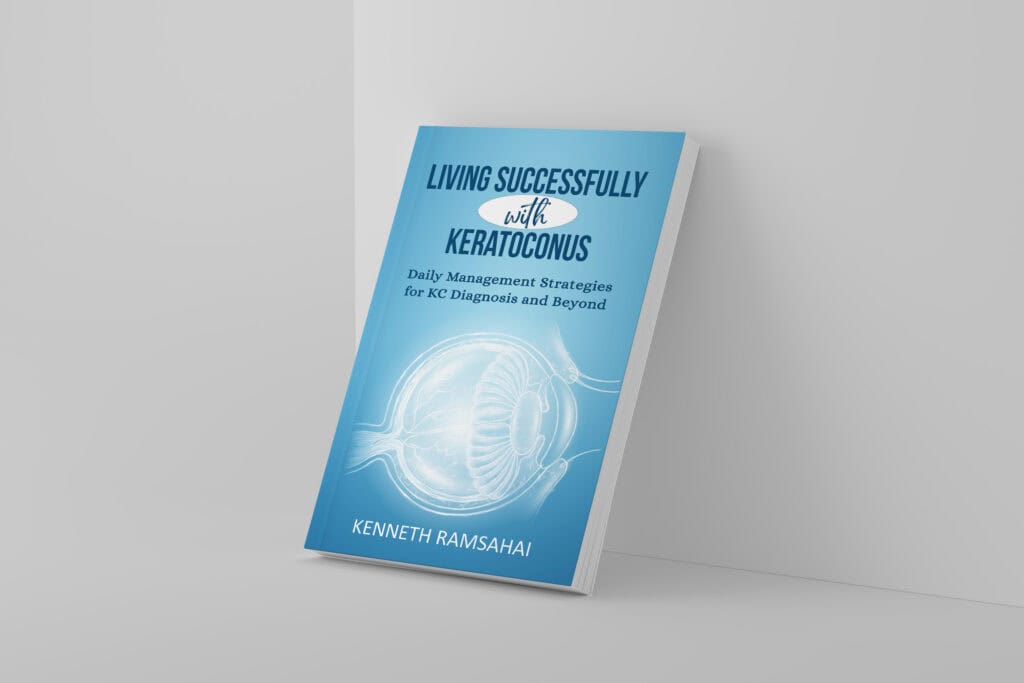The impact of exercise on mental health for those of with keratoconus can be transformative. I remember the day my doctor first suggested exercise might help me cope with this progressive eye condition.
Like many of us dealing with keratoconus, I was skeptical. How could physical activity possibly help me handle the stress of unpredictable vision changes?
Ironically, I initially began training seriously not because of keratoconus but rather because I wanted to get back into shape after I ruptured my Achilles.
It took about a year of rigorous training to get into the kind of shape that changed my life. I only realized later how exercise could benefit those of us with keratoconus.
Yet here I am, years later, amazed at how regular physical activity has transformed not just my physical health, but my emotional well-being too.
A Personal Journey: Understanding Mental Health with Keratoconus
Let’s be honest – living with keratoconus isn’t easy. Some days are better than others, and the emotional rollercoaster can feel overwhelming.
Before I found exercise, I struggled with anxiety about my vision, especially during times when my keratoconus was progressing.
What Are the Psychological Effects of Keratoconus delves into these emotional challenges, and reading it helped me understand I wasn’t alone in my experiences.
Understanding the Impact of Exercise on Mental Health for Those with Keratoconus

Physical activity has become my anchor for emotional well-being. When I’m exercising, my focus shifts from worrying about my vision to feeling strong and capable.
Research shows that regular physical activity releases endorphins that naturally boost our mood and reduce anxiety.
For those of us with keratoconus, these mental wellness benefits can be particularly powerful in managing the daily challenges of our condition.
Mental Health Benefits I’ve Experienced Through Physical Activity
- Significant reduction in vision-related anxiety.
- Improved sleep patterns that help manage daily stress.
- Enhanced emotional resilience and mental clarity.
- A greater sense of control over my overall wellness journey.
Combining Exercise with Keratoconus Treatment
While proper medical care remains crucial – and What Happens if You Don’t Treat Keratoconus explains why – I’ve found that adding exercise to my routine complements my treatment journey.
During the challenging months of adapting to scleral lenses, having a consistent exercise routine helped keep me grounded.
Finding Safe Exercise Options That Work For Us
As someone who’s had a corneal transplant, I understand the importance of exercising safely with keratoconus. 10 Essential Safety Tips for Weight Lifting with Keratoconus became my go-to guide when I started strength training.
I learned to modify exercises and create an environment where I felt confident despite my vision challenges.
What’s Working for Me and Others in Our Community
- Walking and swimming can help to build confidence before trying more intensive workouts.
- Joining a clean gym with excellent lighting – it makes a huge difference.
- Working with a trainer who understands our vision needs has been invaluable.
- Meditation has become my sanctuary, especially on days when my vision feels unstable.
The Unexpected Social Benefits of Physical Activity
One of the most surprising benefits I’ve discovered is the connections I’ve made through exercise. At my local gym, I met another person with keratoconus – we now work out together twice a week.
These connections matter because they help break down the isolation that often comes with our condition.
Starting Your Exercise Journey
Let me share what worked for me when I first started getting back into shape:
- began with just 15 minutes of walking or biking each day.
- Found a gym where I felt comfortable and met my needs.
- Made sure my exercise space had consistent, reliable lighting.
- Learned to listen to my body, especially on days after eye appointments or on days when my lens wear time was longer than my average.
- Kept a simple journal to track both physical and mental health improvements.
The Long-Term Impact of Exercise on Mental Health for Those of Us with Keratoconus
The lasting benefits of regular physical activity extend far beyond fitness. On challenging vision days, I now have better emotional tools to cope. The mental wellness improvements I’ve experienced are echoed throughout our community:
- – “Regular exercise gives me back a sense of control,” shares Michael, who was diagnosed five years ago
- “My anxiety about future vision changes has decreased significantly since starting yoga,” reports Sarah
- “The gym has become my emotional sanctuary,” explains David, who’s had keratoconus for 20 years
Building Sustainable Exercise Habits When You Have Keratoconus
I’ve learned that consistency matters more than intensity. In the beginning, I tried to push too hard, thinking more was better.
Now I know that sustainable exercise with keratoconus is about finding what works for your vision and energy levels each day.
Some days I might only do light dynamic stretching, and that’s okay. On other days, when my vision and energy are good, I might tackle a more challenging workout.
Exercise as an Emotional Anchor During Treatment Changes

Let me tell you about how exercise helped me during one of my most challenging periods. When I was adapting to new scleral lenses, my gym routine became my constant.
While everything else felt uncertain, I could still do my familiar exercises, even if I had to modify them. This routine provided:
- A sense of normalcy when my vision felt anything but normal.
- Small daily victories when I needed them most.
- Physical activity to help manage the stress of adaptation.
- A positive focus during frustrating vision days.
Creating Your Exercise Journey
Everyone’s experience with keratoconus is unique, and your exercise journey will be too. What works for me might need adjusting for you.
The key is starting somewhere and being patient with yourself. Some days will be better than others, and that’s part of the process.
Conclusion: Moving Forward Together
Exercise has become more than just physical activity – it’s now an essential part of how I manage life with keratoconus. It’s given me strength not just physically, but mentally and emotionally too.
I’ve gone from being skeptical about how exercise could help to becoming an advocate for its benefits in our community.
If you’re just starting to think about adding exercise to your keratoconus journey, remember: to start small, be patient, and celebrate every victory along the way. Most importantly, know that you’re not alone in this journey.
Call to Action:
I’d love to hear about your experiences with exercise and keratoconus. Join our community at LivingWithKeratoconus.org to share your story and connect with others who understand exactly what you’re going through.
Sign up for our newsletter for regular tips and inspiration on maintaining physical and mental wellness while living with keratoconus.
Very Proud To Announce
Want to see what’s inside? Click the book cover, which is also available in audiobook format, to read a free sample on Amazon. Discover how the “Clear Vision Window” concept can transform how you manage life with keratoconus.
If you find the sample valuable, please consider purchasing the complete book. Your purchase supports the keratoconus community while giving you access to all the practical strategies I’ve developed over three decades.
If you do purchase, I’d appreciate an honest review—it helps others with keratoconus find this resource.

Sources:
- The Link Between Exercise and Mental Health
- The Role of Exercise in Management of Mental Health Disorders: An Integrative Review
- The direct effect of exercise on the mental health of scientific and technological professionals and the mediating effects of stress, resilience, and social support
- The Mental Health Benefits of Exercise